Specs for Intex Easy Set 15 X 48
iPhone X and iPhone 8 Final Specs: Here's What You Get
Editors' Note: We first published this story on Sept. 12, but updated it now that we've reviewed both the iPhone X and the the iPhone 8 and 8 Plus.
The iPhone X is the biggest change to Apple's phone lineup in years, introducing an entirely new all-display look and long sought-after features like an OLED screen and wireless charging. Starting at $999 and now available for pre-order, it also has a super-sized price tag to match all those high-end features.
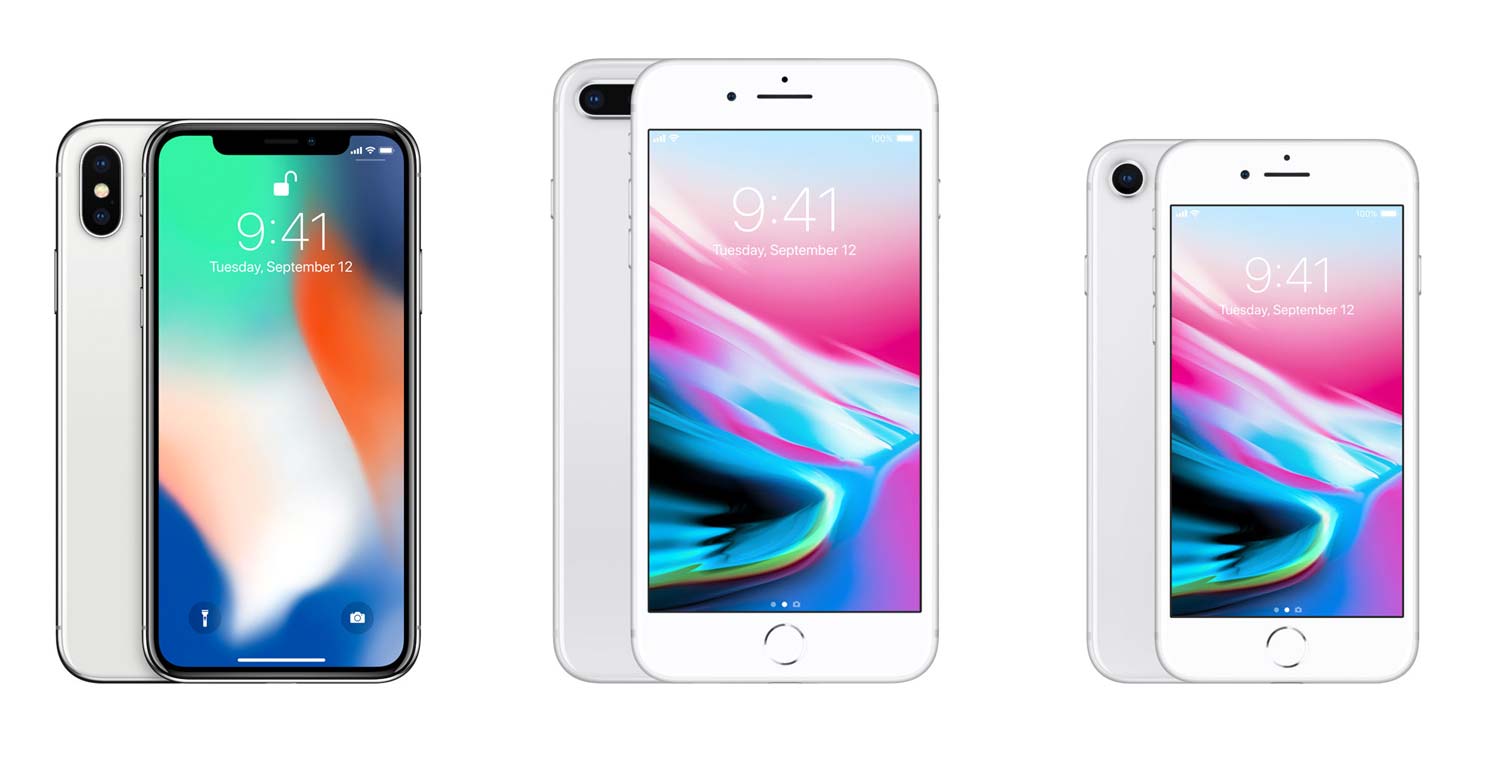
But the iPhone X isn't the only Apple phone vying for a space in your pocket. Apple has also introduced the iPhone 8 and iPhone 8 Plus, as successors to last year's iPhone 7 and 7 Plus. These new phones don't have quite the gangbuster features that the iPhone X can boast, but there are still some improvements to both the processor and camera that will appeal to iPhone fans who balk at paying top dollar for the X.
How to tell Apple's latest iPhones apart? Here's a closer look at what you can expect from each new model.
iPhone 8 and iPhone X Specs
| Phone | iPhone 8 | iPhone 8 Plus | iPhone X |
| Price | $699, $849 | $799, $949 | $999, $1,149 |
| Size | 5.5 x 2.7 x 0.29 inches | 6.2 x 3.1 x 0.3 inches | 5.7 X 2.8 X 0.3 inches |
| Weight | 5.22 ounces | 7.13 ounces | 6.14 ounces |
| Screen Size (Resolution) | 4.7-inches (1334 X 750) | 5.5-inches (1920 X 1080) | 5.8-inches (2436 X 1125) |
| CPU | A11 Bionic | A11 Bionic | A11 Bionic |
| RAM (reported) | 2GB | 3GB | 3GB |
| Capacity | 64, 256 GB | 64, 256 GB | 64, 256 GB |
| Rear Camera | 12-MP | Dual 12-MP (f/1.8, f/2.8) | Dual 12-MP (f/1.8, f/2.4) |
| Front Camera | 7-MP FaceTime HD | 7-MP FaceTime HD | 7-MP TrueDepth |
| Unlocking Method | Touch ID | Touch ID | Face ID |
| Colors | Space Gray, Silver, Gold | Space Gray, Silver, Gold | Space Gray, Silver |
| Battery Life (Hrs:Mins) | 9:54 | 11:16 | 10:49 |
Screen Size and Resolution
The iPhone X's screen — which Apple calls a Super Retina display — is the new phone's most prominent feature, stretching from one end of the device to the other. That gives you 5.8 inches of real estate on a phone that's only slightly largely than the 4.7-inch iPhone 8.
MORE: iPhone X vs iPhone 8 vs iPhone 7: Which One's Right For You?
Apple also upped the resolution on the iPhone X's screen. It's 2436 X 1127 pixels. By comparison, the iPhone 8 Plus tops out at 1920 x 1080. Apple says the iPhone X packs 2.7 million pixels into that screen, or 458 pixels per inch.
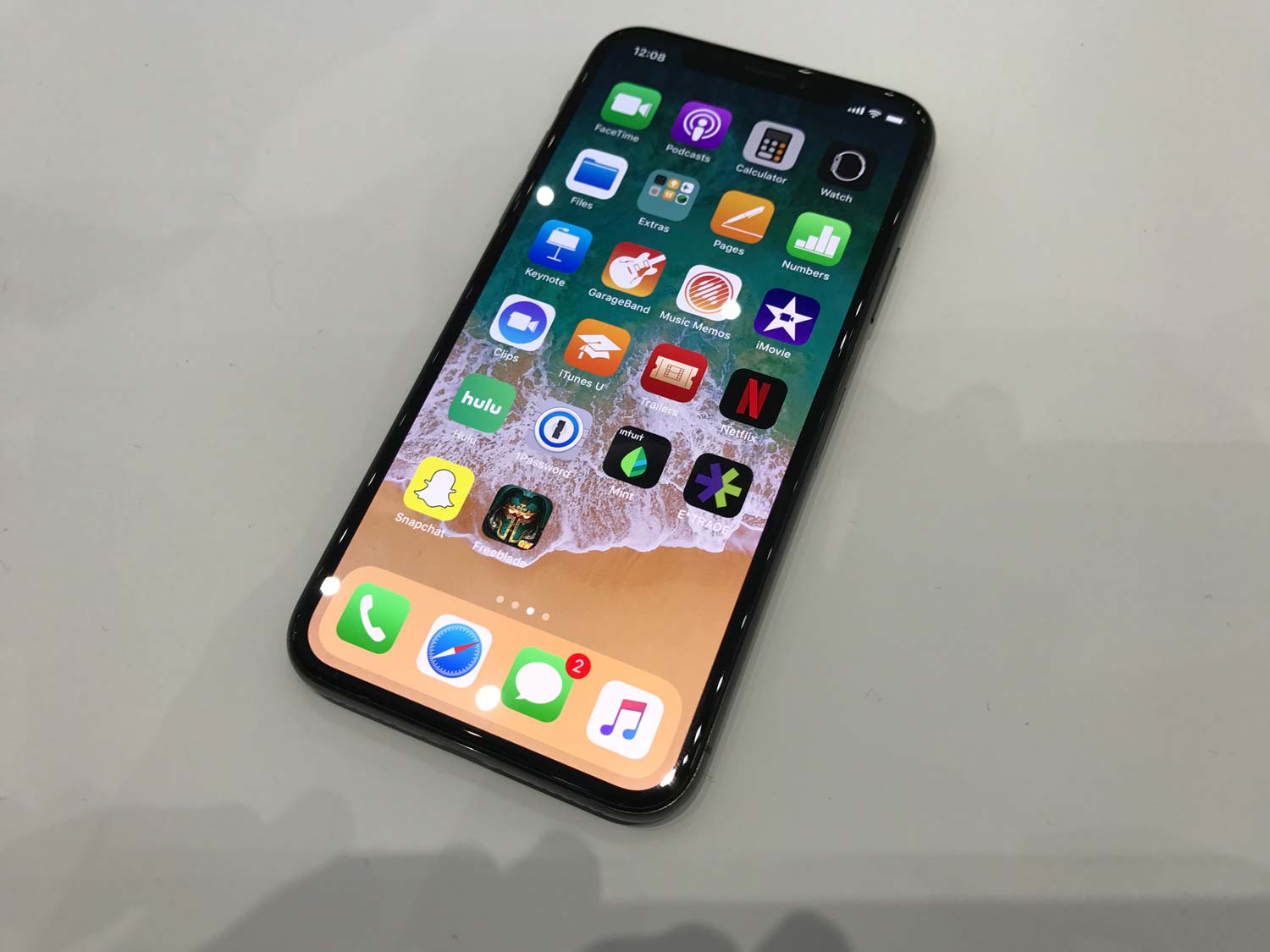
The biggest change, though, is the kind of screen Apple uses on the iPhone X. After a decade of featuring LCD panels on its phones, Apple is switching over to OLED for the iPhone X. That means better contrast on the new phone as well as blacks that truly look black. The screen also supports HDR 10 and DolbyVision for sharper, more colorful videos, at least in movies and shows that support those standards. In fact, having compared Apple's new phone to devices from Google and Samsung, we think the iPhone X is the king of OLEDs.
Little has changed with the iPhone 8 and 8 Plus from their predecessors. Those two devices still use LCD panels and retain their respective sizes of 4.7 and 5.5 inches. Resolution hasn't changed from the iPhone 7 — that's 1334 x 750 for the iPhone 8 and 1920 x 1080 for the 8 Plus.
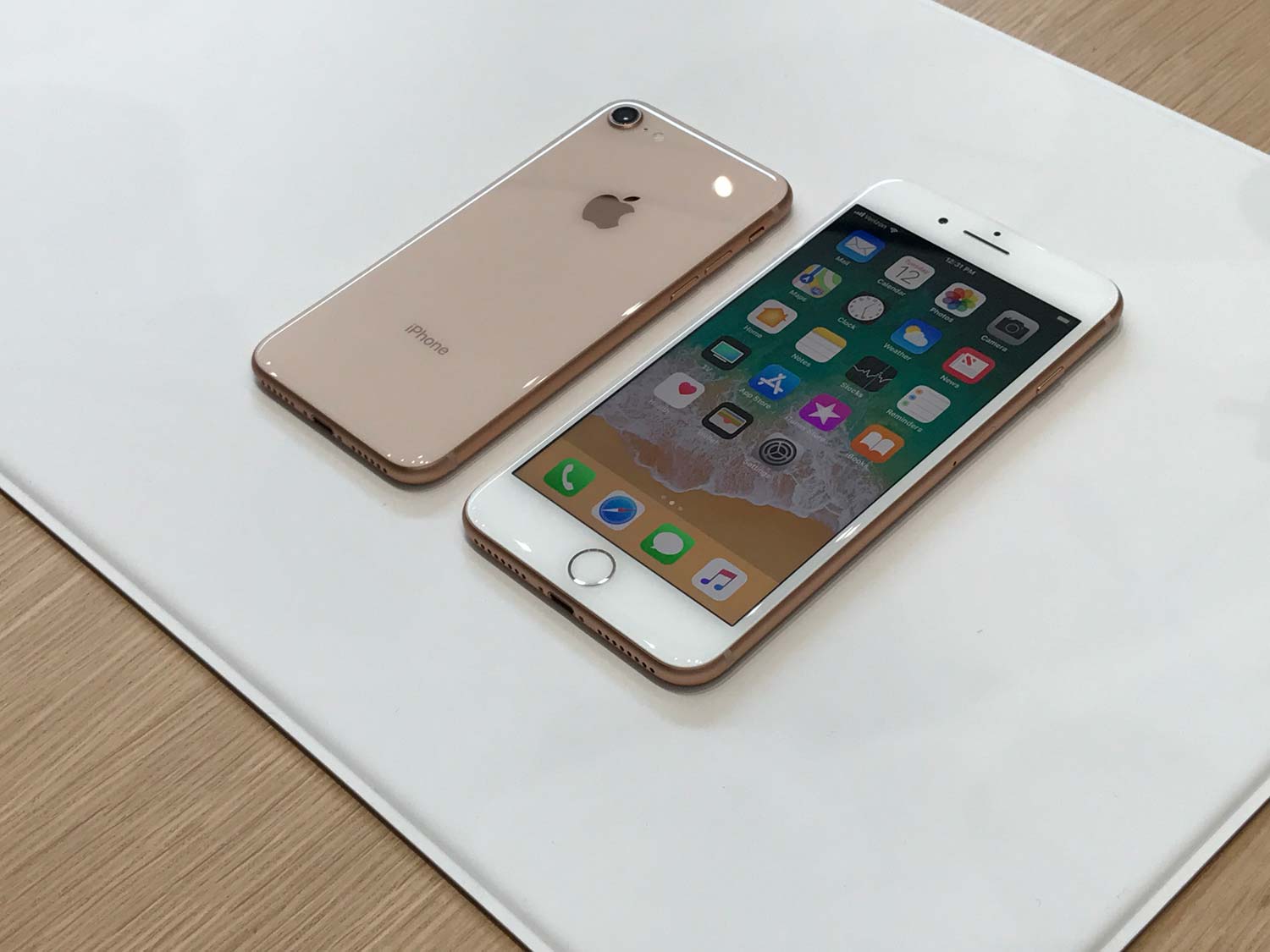
Apple's new iPhones have something their predecessors didn't, though. They add the TrueTone feature previously found on the iPads. TrueTone adjusts color tone on the fly, so that it matches the lighting around you. You also get a wider color gamut.
Design and Colors
The iPhone X introduces the more noteworthy design changes to Apple's iPhone lineup, driven largely by that screen extending across the front of the phone. That means the home button's gone on the iPhone X, replaced by an upward swipe to replicate the old home button press. You unlock the phone with your face, instead of your fingerprint, as we'll discuss below. A notch at the top of the screen hosts the front camera and ear piece as well as the all the components that support facial recognition.
Apple went with a curved all-glass design for the iPhone X. The button on the side of the phone now activates Siri — no more home button to press, remember? — for those times you don't want to use the voice-activated "Hey Siri" command to trigger the phone's built-in assistant.
The iPhone 8 and 8 Plus don't depart from the look of the existing iPhone lineup, as they still feature home buttons and bezels. However, similar to the iPhone X, Apple has changed up the design, going with a glass-and-aluminum case to assist with wireless charging. All three of Apple's new phones are dust- and water-resistant.
You can get the iPhone X in any color you want so long as it's space gray (also known as black) or silver. The iPhone 8 and 8 Plus add gold to the color mix.
Cameras
Both the iPhone X and iPhone 8 Plus offer the dual rear cameras Apple introduced with last year's iPhone 7 Plus. While both phones offer a pair of 12-megapixel lenses, there are subtle difference. The aperture on the iPhone X's telephoto lens is slightly larger at f/2.4. More importantly, the iPhone X offers optical image stabilization on both its rear lenses, and it's been more finely tuned for augmented reality with individually calibrated lenses and new gyroscopes and accelerometers.
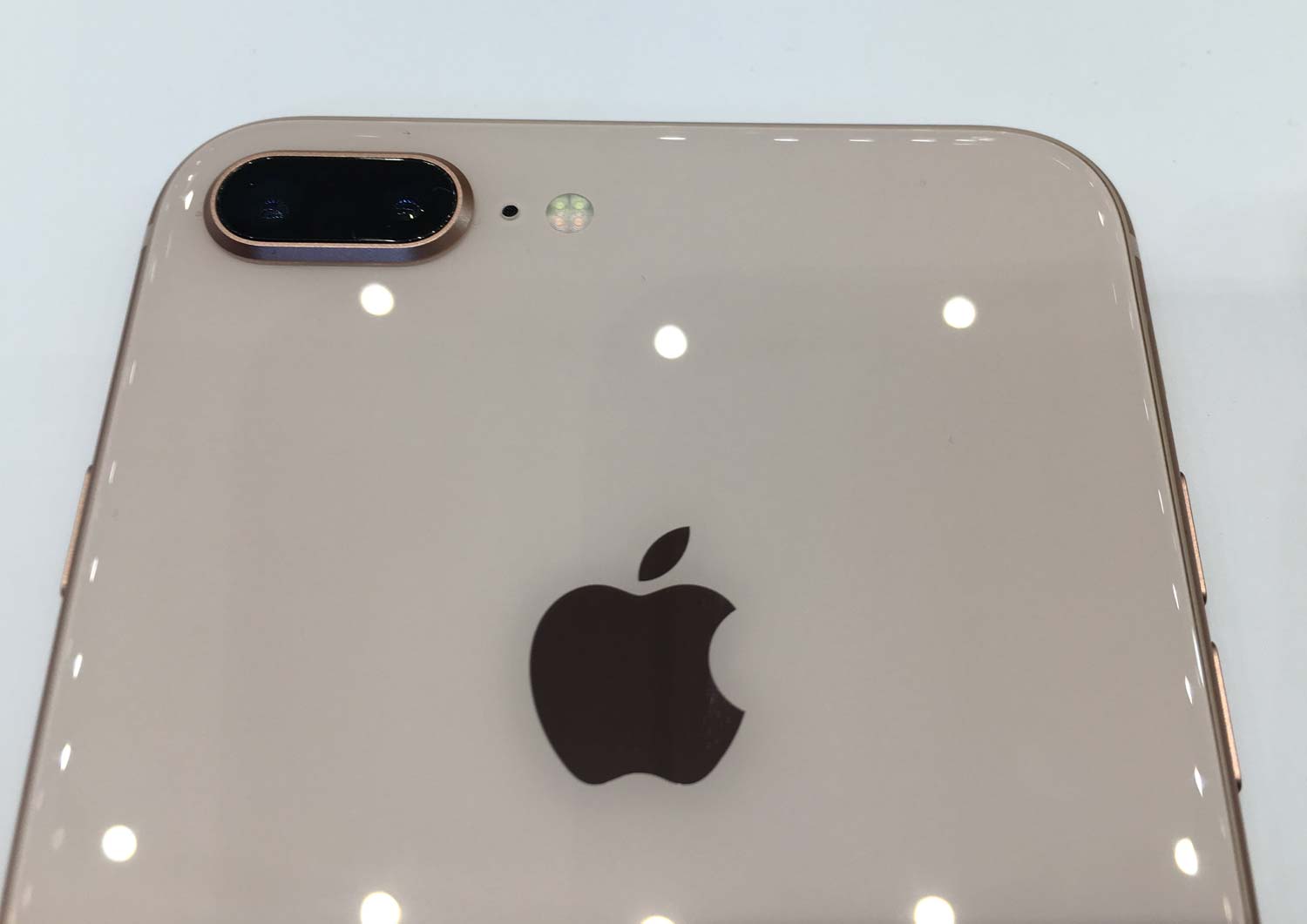
Both the iPhone X and 8 Plus support Portrait Mode, including the new Portrait Lighting feature that lets you augment your photos with 5 different lighting effects.
MORE: iPhone 8 Plus vs. Google Pixel 2 Camera Shootout: Apple Wins
The iPhone 8 remains Apple's single-lens rear camera offering. It features a 12-megapixel sensor with an f/1.8 aperture. Both new iPhone 8s can record 4K video at 60 frames per second and support super slo-mo at 240 fps.
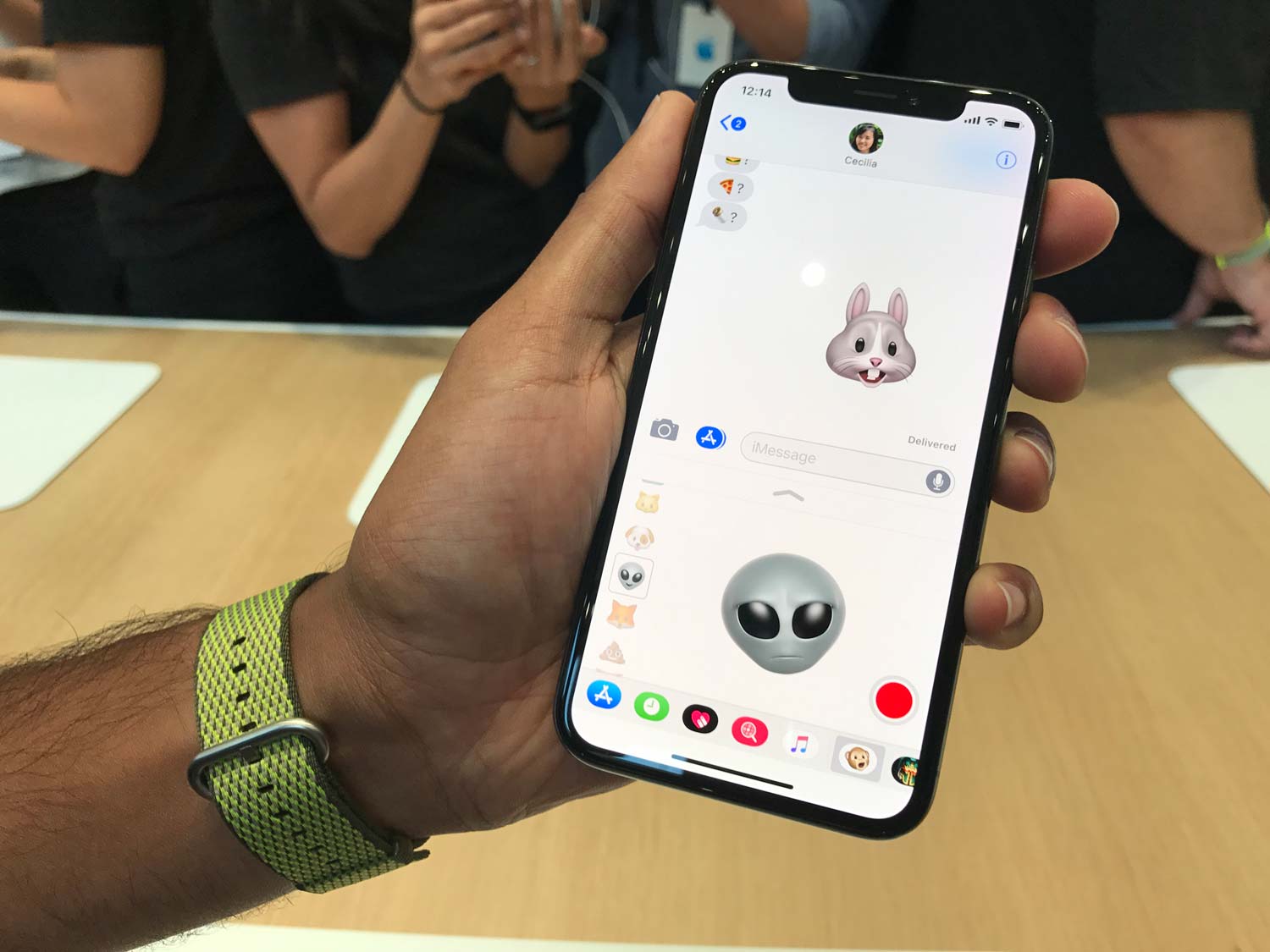
You'll find a 7-MP selfie cam on all three new iPhones, though the TrueDepth camera on the front of the iPhone X is more sophisticated than what either iPhone 8 offers. It supports the Animoji feature which create animated emoji for the Messages app that mirror your facial expressions and head movements.
CPU, RAM and Storage
All three new iPhones include the same Apple-designed A11 Bionic processor, and that's good news no matter which iPhone you buy. The A11 turned in stellar results when we tested it, with both the iPhone 8 and X outperforming leading Android devices powered by Qualcomm's Snapdragon 835.
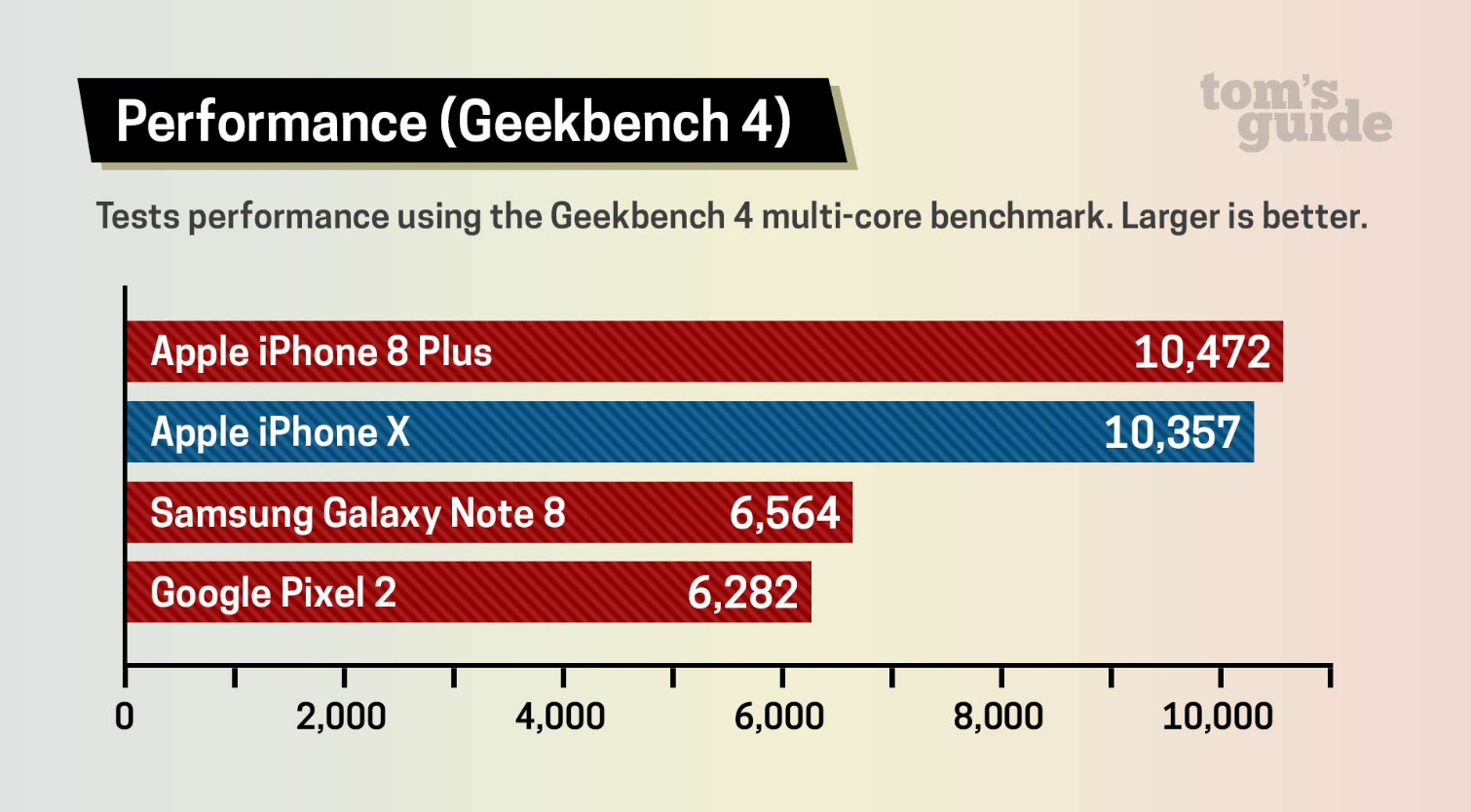
Results were similarly impressive in real-world testing. In one test, we had the new iPhones transcode a 4K video. Both the iPhone X and iPhone 8 took 42 seconds to complete the task, well ahead of any Android phone.
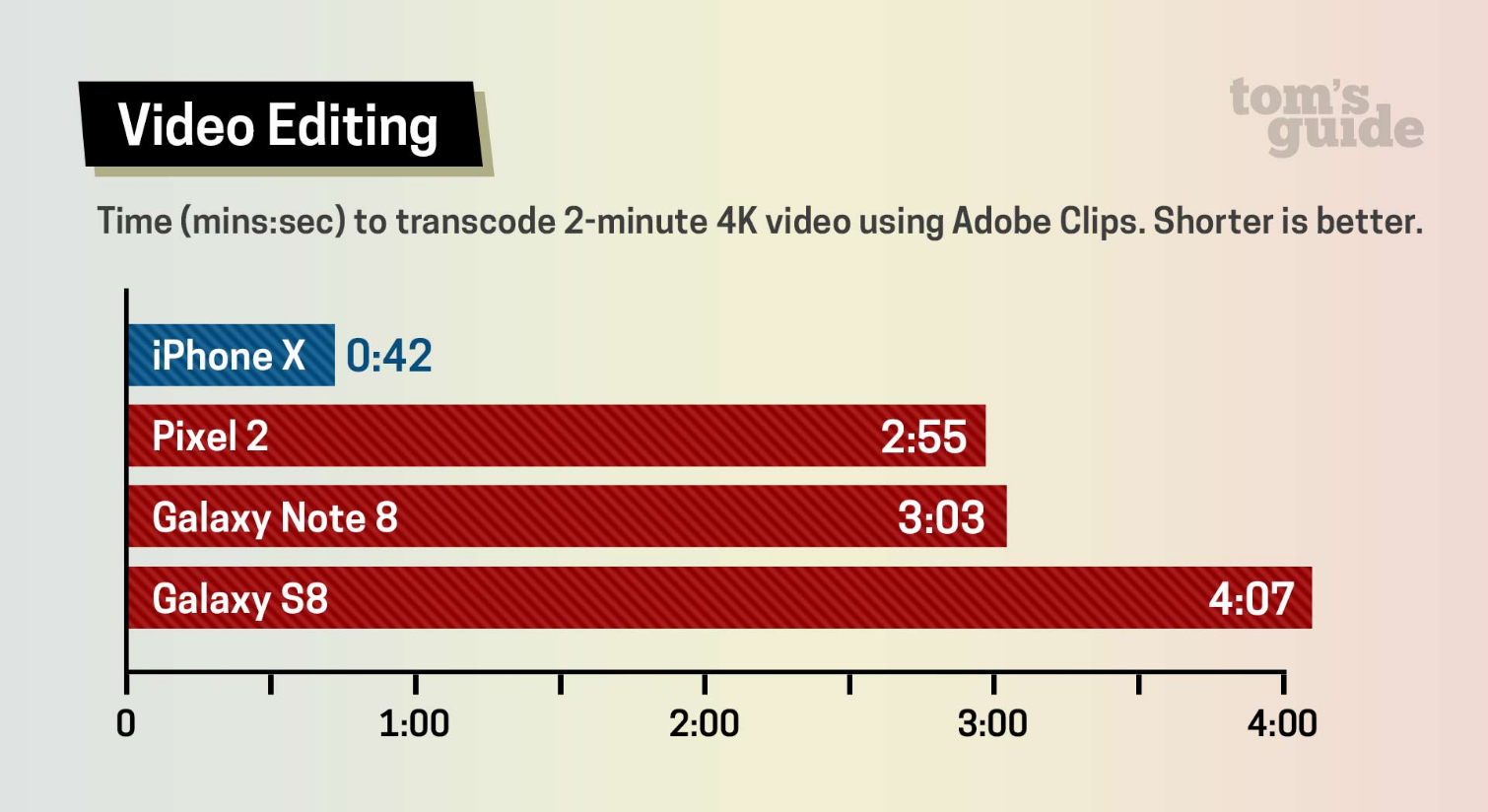
After years of asking iPhone users to make do with 16GB of storage, Apple has seen the light on capacity. All three new iPhones start at 64GB of storage, with 256GB options also available.
Apple keeps its cards close to the vest on RAM, but teardowns suggest that the iPhone 8 has 2GB of RAM while the 8 Plus and X feature 3GB.
Battery Life and Charging
That glass look on the new iPhones is for more than just show. It also assists a new feature added to the iPhone X and both iPhone 8 models: wireless charging. You'll be able to toss your new iPhone onto a wireless charging pad that uses the Qi standard and you'll be able to top off your battery without plugging into anything.
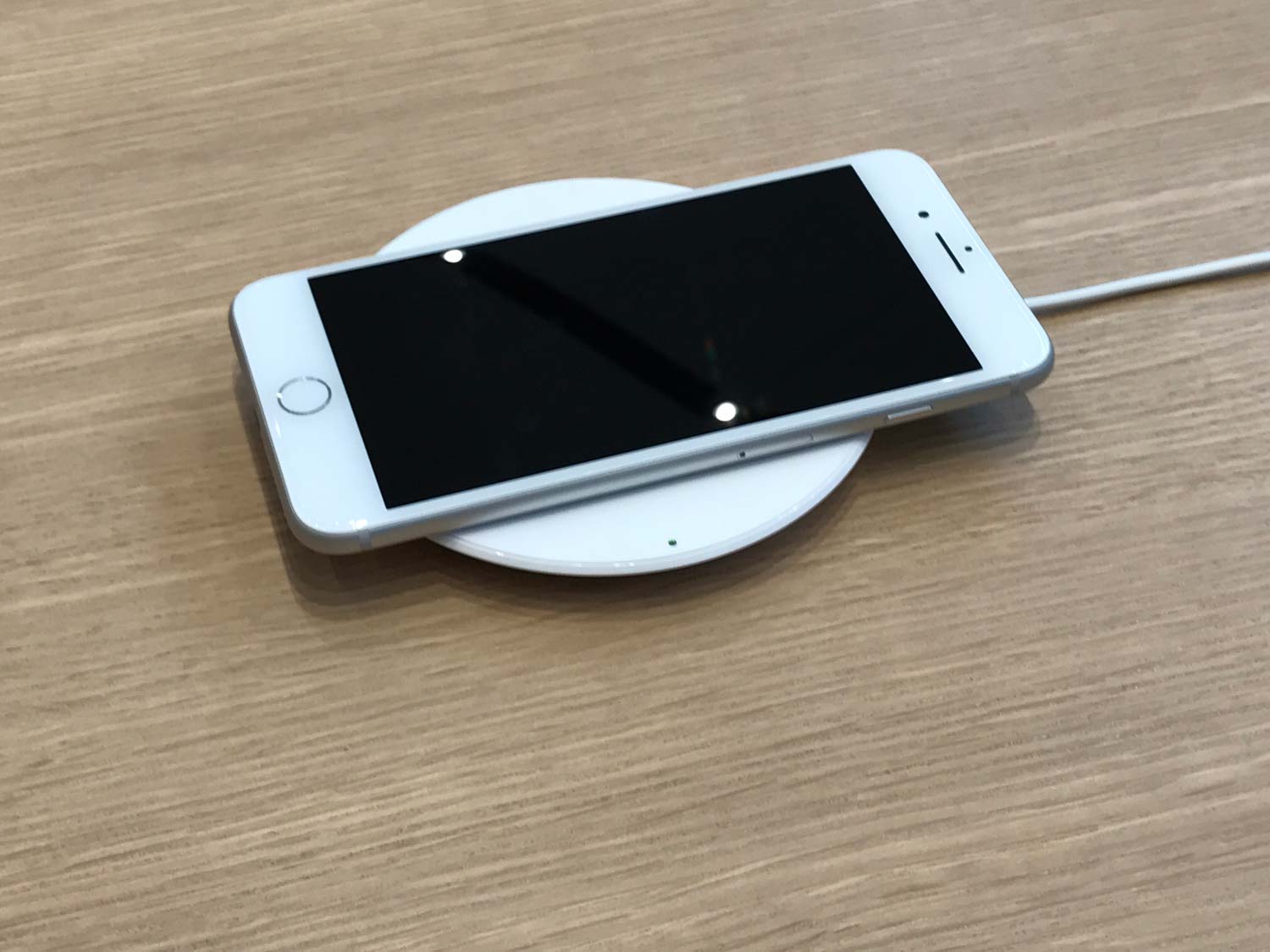
We weren't expecting big changes in battery life for the iPhone 8 and iPhone 8 Plus, as Apple would only promise that they'll match the battery life of the iPhone 7 and 7 Plus. After testing the phones, though, Apple's new models do last longer. The iPhone 8 Plus sets the pace, lasting 11 hours, 16 minutes on our battery test that involves continuous surfing over LTE. The iPhone 8 turned in a better-than-average time of 9:54. Both of those times improved on the iPhone 7 (9:03) and iPhone 7 Plus (10:38), which we tested last year.
Apple had promised that the iPhone X would outlast the iPhone 7 by two hours, and it came pretty close in our test. The iPhone X lasted 10:49, which is 1:46 longer than the iPhone 7 and an hour better than the average smartphone. Still, the iPhone 8 Plus is the battery champ among Apple's current smartphones.
Special Features
AR figures to play a prominent role with all new iPhones, given the processing oomph Apple has built into its devices. Then again, ARKit-built apps should work with any phone with an A9 processor that runs iOS 11. The new phones — the iPhone X in particular — will just be able to do more with those apps.
MORE: Face ID Changes How You Unlock Your Phone
The big addition to the iPhone X is Face ID, a facial recognition feature that replaces Touch ID as the way to unlock your phone and verify ApplePay payments. Face ID uses a flood illuminator, infrared camera and dot-matrix system to detect, map and verify your face, and all that supposedly happens instantaneously. We found that Face ID works pretty well, even if it is slightly slower than Touch ID.
Price and Availability
There's a stark difference between what you'll pay for the iPhone 8 and the iPhone X. The iPhone 8 and 8 Plus price tags are in the ballpark of what Apple charged for the iPhone 7 and 7 Plus. The smaller phone starts at $699 while the iPhone 8 Plus costs $799.
The iPhone X will be the most expensive phone Apple's ever sold with a starting price tag of $999.
The iPhone 8 and 8 Plus started shipping in September and are pretty easy to get your hands on. Pre-orders are underway for the iPhone X, and already the phone is in short supply. The iPhone X arrives in stores on Nov. 3.
- Best Camera Phones
- 6 Reasons You Should Skip iPhone X and Just Get iPhone 8
- How to Use iPhone X Without a Home Button
robinsonbeile2002.blogspot.com
Source: https://www.tomsguide.com/uk/us/iphone-8-iphone-x-final-specs,news-25830.html
0 Response to "Specs for Intex Easy Set 15 X 48"
Post a Comment